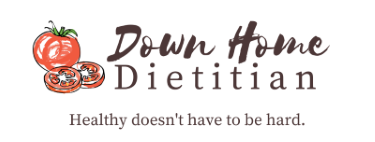7 Reasons Diabetes Recommendations are So Darn Hard to Follow
Managing diabetes is a struggle. It can be overwhelming and exhausting to try to keep your blood sugar under control. Here are 7 reasons I think people find it challenging to do the things they know would be good for them:
- They are confusing. Nobody can agree. You get one recommendation from your doctor, one from an article you read online, one from a library book, and three others from your friends with diabetes. So who’s right? Sometimes no one, sometimes all of them. Diabetes recommendations (and bodies!) are so, so individual. Just because something is recommended for your friend or even the general public, doesn’t necessarily mean it’s right for you. Discuss your questions with your doctor and your dietitian. They should be able to help you weed out what’s right for you.
- They are overwhelming. So much to do, so little time: checking blood sugars (sometimes 4-6 times a day!), taking medications, dosing insulin, watching your diet, and staying active. I get it – I’m living it temporarily and I’m already starting to wonder how people do this all the time. Managing diabetes is no joke. Sometimes I feel that as health professionals, we throw too many tasks at patients at one time. Be sure to communicate what’s realistic for you and tell your care team if you need to prioritize changes into smaller steps.
- Presentation is key. Along the same lines, nutrition information for diabetes is often presented in a tsunami of recommendations to idealize someone’s diet and prevent every chronic condition under the sun. I have sat in on and (I hate to say it) helped teach classes that covered carbohydrates, proteins, portion control, fiber, saturated fat, unsaturated fat, heart healthy recommendations, exercise, and mental and sexual health in one mind-numbing three hour stint. How likely is it that those poor people are going to retain anything useful? In fact, I meet with patients on a weekly basis who have attended those types of classes and flat out told me, “I didn’t learn anything. There was way too much information.” My plea to my profession: BREAK IT UP, PRIORITIZE, and EMPATHIZE.
- Portion does not mean portion. This is a big one. Diabetes educators and dietitians have adopted a term called “diabetes portion” or “carbohydrate portion.” This amount of a food has about 15 grams of carbohydrate and is intended to make carb counting easier. After learning the portions, someone can simply choose 3-4 per meal, 5-7 per meal, or however many their dietitian recommends, rather than track and count grams of carbohydrate. The unfortunate reality is that the word “portion” sends the message that that amount of carbohydrate is all they can have at once. I can’t tell you how many people I’ve worked with who say dejectedly, “So-and-so told me I could only ever have 1/3 cup rice at a time and that’s just never going to happen.” This misconception is suuuuuuper defeating for people who want to manage their diabetes, because they think they have to starve to do it. My solution? Change “carbohydrate portions” to “carbohydrate choices” or something less confusing so people know they can still eat!
- It’s not black and white. Eating for diabetes is not a list of “good foods” and “bad foods,” which can be confusing. Carbs are not bad and they give us energy, but people with diabetes simply can’t process too many carbs at one time. It’s not total avoidance, it’s moderation. Sometimes that’s hard to grasp.
- The media. Ohhhhhh the media…so useful in some ways, so full of garbage information in others.
- It’s a moving target. Recommendations for managing blood sugar are based on a conglomeration of research in the field. You know what that means? New research = new recommendations. Every few years, the recommendations change a bit based on new information. That’s why it’s important, even if you’ve had nutrition education before, to meet with your doctor regularly and a dietitian at least once a year to keep up on what’s new.




Leave a Comment